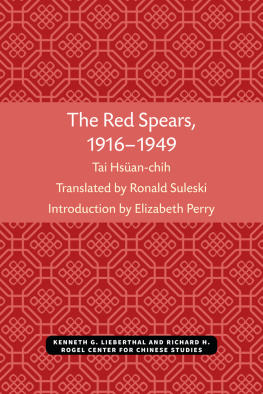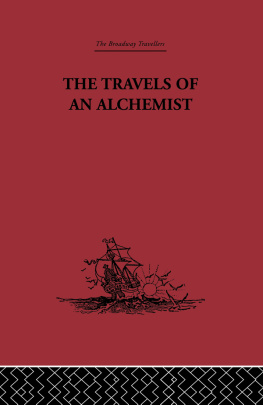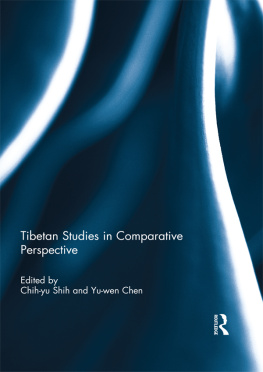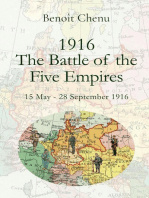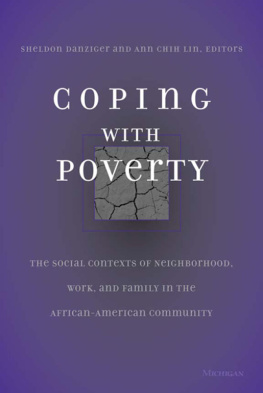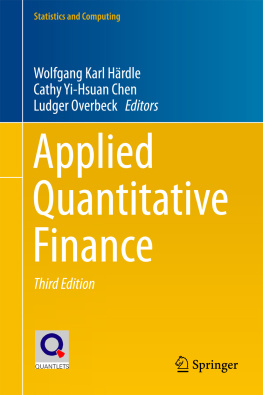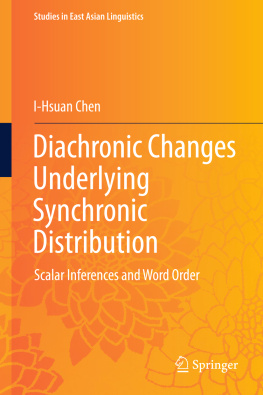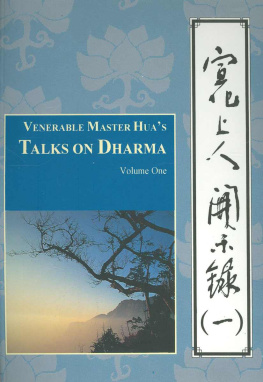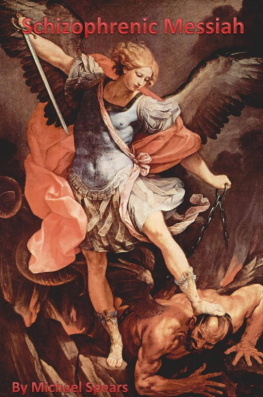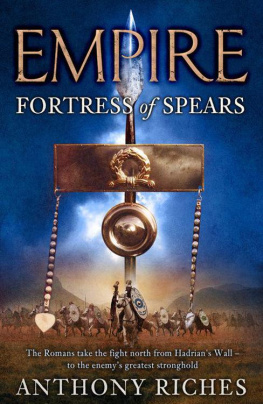Tai Hsüan-chih - The Red Spears, 1916-1949
Here you can read online Tai Hsüan-chih - The Red Spears, 1916-1949 full text of the book (entire story) in english for free. Download pdf and epub, get meaning, cover and reviews about this ebook. year: 1985, publisher: Kenneth G. Lieberthal and Richard H. Rogel Center for Chinese Studies, genre: Politics. Description of the work, (preface) as well as reviews are available. Best literature library LitArk.com created for fans of good reading and offers a wide selection of genres:
Romance novel
Science fiction
Adventure
Detective
Science
History
Home and family
Prose
Art
Politics
Computer
Non-fiction
Religion
Business
Children
Humor
Choose a favorite category and find really read worthwhile books. Enjoy immersion in the world of imagination, feel the emotions of the characters or learn something new for yourself, make an fascinating discovery.
- Book:The Red Spears, 1916-1949
- Author:
- Publisher:Kenneth G. Lieberthal and Richard H. Rogel Center for Chinese Studies
- Genre:
- Year:1985
- Rating:4 / 5
- Favourites:Add to favourites
- Your mark:
- 80
- 1
- 2
- 3
- 4
- 5
The Red Spears, 1916-1949: summary, description and annotation
We offer to read an annotation, description, summary or preface (depends on what the author of the book "The Red Spears, 1916-1949" wrote himself). If you haven't found the necessary information about the book — write in the comments, we will try to find it.
The Red Spears, 1916-1949 — read online for free the complete book (whole text) full work
Below is the text of the book, divided by pages. System saving the place of the last page read, allows you to conveniently read the book "The Red Spears, 1916-1949" online for free, without having to search again every time where you left off. Put a bookmark, and you can go to the page where you finished reading at any time.
Font size:
Interval:
Bookmark:

The University of Michigan
Center for Chinese Studies
Michigan Monographs in Chinese Studies
No. 54
The Red Spears, 1916-1949
by Tai Hsan-chih
translated by Ronald Suleski
introduction by Elizabeth Perry
Ann Arbor
Center for Chinese Studies
The University of Michigan
1985
Open access edition funded by the National Endowment for the Humanities/Andrew W. Mellon Foundation Humanities Open Book Program.
1985
by
Center for Chinese Studies
The University of Michigan
Printed in the United States
Cover design by Eric Ernst
ISBN 978-0-89264-060-7 (hardcover)
ISBN 978-0-89264-059-1 (paper)
ISBN 978-0-472-12791-7 (ebook)
ISBN 978-0-472-90187-6 (open access)
The text of this book is licensed under a Creative Commons Attribution-NonCommercial-NoDerivatives 4.0 International License: https://creativecommons.org/licenses/by-nc-nd/4.0/
Contents
, by Elizabeth Perry
, by Ronald Suleski
, by Tao Hsi-sheng
Elizabeth J. Perry
Before Tai Hsan-chih wrote his book on the Red Spear Society more than a decade ago, the subject of his study was a little understood movement that seemed of only passing interest to scholars of Chinaintriguing for its peculiar beliefs and rituals, perhaps, but hardly of central importance to modern Chinese history. Today, however, thanks in no small measure to the pioneering work of Professor Tai, the Red Spears have gained a secure niche in scholarship on modern China. Their numbers (reaching perhaps some three million participants at the height of the movement) and endurance (lasting intermittently for several decades) should stand as reason enough for the recent scholarly attention. But the Red Spears have generated interest for other reasons as well. As research into the history both of Chinas traditional rural rebellions and of her Communist revolution has developed over the past few years, the Red Spears have assumed increasing significance. A movement which bore marked similarities to earlier Chinese uprisings (most notably the Boxers), the Red Spears nevertheless operated in a later period of history (right through the middle of the twentieth century) which brought them in direct contact with Communist revolutionaries. An analysis of the Red Spears thus becomes important both for what it can tell us about longstanding patterns of rural rebellion in China, and for what it suggests about the nature of the Chinese revolution.
As the importance of the Red Spears has gained recognition, scholarly controversy over how to interpret the movement has also grown. The areas of dispute concern three basic aspects of the Red Spear Society: (1) origins, (2) social composition, and (3) relationship to revolution. On the first issue, there is disagreement over when and where the movement got underway. Although such matters may seem of only arcane interest, in fact they are closely connected to larger questions about the Red Spears place in the tradition of Chinese popular protest: How was the Red Spear Society related to earlier secret society or sectarian groups, such as the White Lotus Society? Were the Red Spears descendants of the Boxers? The second issue concerns the nature of Red Spear members and leaders: Were these freeholding peasants, tenants, rich peasants, and/or landlords? In whose interests did the movement fight? Was it principally a class or community-based operation? Was it conservative or progressive? The third issue centers on the relationship between the Red Spear Society and the Chinese Communist revolution: Did the Red Spears facilitate or obstruct the course of the revolution?
Tai Hsan-chih offers stimulating hypotheses on each of these three basic areas of dispute, thereby setting the framework for much of the scholarly debate which has ensued over the past decade and a half. On the question of origins, Professor Taiwho is also the author of a major study of the Boxer uprisingsituates the Red Spears squarely in the Boxer tradition. But Tai Hsan-chih argues for more than geographical or temporal connections; he also contends that the two movements shared a common organizational ancestor: the local militia. Here Tai is extending the line of argument advanced in his earlier book on the Boxersan argument which holds that the village militia, rather than the sectarian White Lotus Society, was the institutional foundation of the movement.
In his earlier study, Professor Tai attempts to establish that the Boxers were an outgrowth of local defense forces [hsiang-tuari] whose aim was to provide protection against rampant banditry. As
All of this is not to argue that either the Boxers or Red Spears were simply offshoots of the White Lotus; in fact mounting evidence suggests that both groups were often quite hostile to White Lotus members. Yet despite expressions of animosity against individual sectarians, it is clear that Boxers and Red Spears did draw inspiration from elements of the heterodox tradition. Indeed this question of the precise relationship of the Red Spears to the Little Tradition of rural China is a subject which has elicited increasing attention from scholars in recent years (as I will discuss below). If the origins of the Red Spears are still obscure, the social composition of the movement is somewhat better understood. Professor Tai has made a major contribution by correctly identifying the bulk of Red Spear leaders as drawn from the ranks of rich peasants, landlords
As Professor Tai makes clear, early Red Spear operations were directed primarily against bandits. Over time, however, both the targets and the composition of the movement grew more complex. Marauding warlord troops and rapacious tax collectors prompted the Red Spears to fight against soldiers and government officials as well as bandits. Tai offers interesting information on the tax burden during the Republican period, although the data must be treated with caution in light of the imprecise statistics available for the period. (One wonders, for example, just how Professor Tai arrived at his conclusion that the people of Shantung in 1927 paid more than four times the taxes paid in the United States that year.) Despite ambiguities in the figures, it seems clear that onerous surtaxes were being imposed in much of the North China countryside. And, as Tai points out, Red Spear resistance was directed at these surcharges rather than at the land tax itself. Seeing the latter as a legitimate emperors tax (albeit years after the imperial system had been overturned), the Red Spears objected only to the newly imposed surcharges. Theirs was thus a conservative position which harked back to earlier days for its moral standards.
In time, the purely defensive character of the Red Spear movement was somewhat modified. Professor Tai observes that leadership came increasingly to be usurped by local bullies, who sometimes converted their groups into bandit outfits. As the translator of this volume states in his introduction, Tai Hsan-chih is uncertain about just how to evaluate the role of the Red Spears. This ambiguity, a natural consequence of the very complicated nature of Red Spear composition and activities, has also troubled historians in the Peoples Republic of China. Should the Red Spears be judged a progressive or reactionary force in Chinese history? If Professor Tai holds the local bully element responsible for a deterioration in Red Spear discipline, PRC historians have been even more concerned with landlord-rich peasant involvement in the movement. As we will see below, recognition of this difficulty has led to a negative assessment of the Red Spears in recent Chinese scholarship.
Font size:
Interval:
Bookmark:
Similar books «The Red Spears, 1916-1949»
Look at similar books to The Red Spears, 1916-1949. We have selected literature similar in name and meaning in the hope of providing readers with more options to find new, interesting, not yet read works.
Discussion, reviews of the book The Red Spears, 1916-1949 and just readers' own opinions. Leave your comments, write what you think about the work, its meaning or the main characters. Specify what exactly you liked and what you didn't like, and why you think so.

